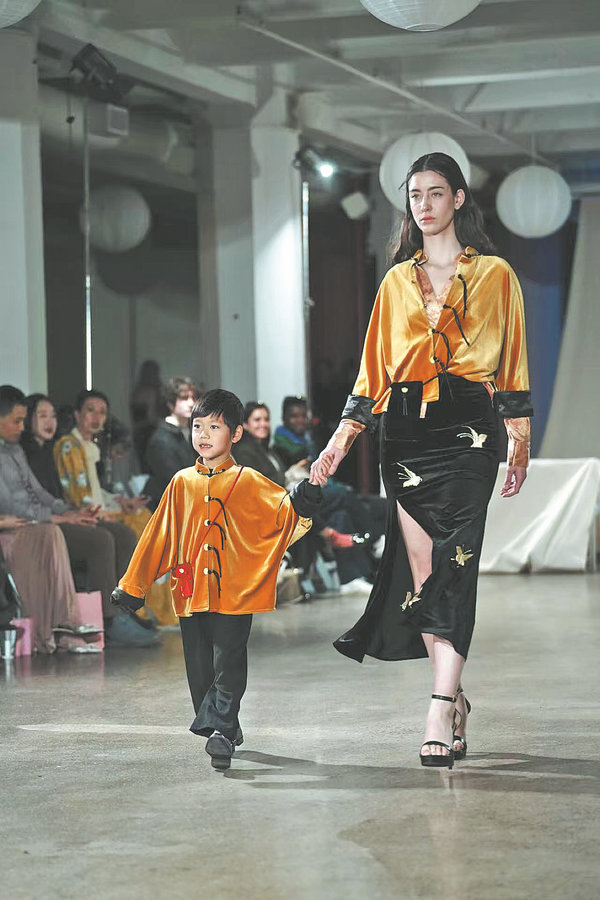From 'battle robe' to fashion icon
Haipai qipao culture evolves into modern day with fresh structure and versatile fabrics, making it the perfect wardrobe piece for casual or formal occasions, He Qi reports.


Designed for competition
The promotion of haipai, or Shanghai-style qipao culture, not only involves the continuous participation of young people and active brands but also the impetus of social organizations behind it.
The 3rd Innovative Haipai Qipao Design Competition kicked off at the Shanghai University of Engineering Science last month. Aimed at exploring and inheriting the integration of Atlas silk, a precious intangible cultural heritage craft, and haipai qipao culture, the contest focuses on college students' designs, builds a platform for cultural exchange and innovation to engage more young people in learning, and carries forward traditional culture.
The competition received 1,021 designs from 76 domestic and international universities, including those from France, the United States, South Korea, and Morocco, as well as 16 enterprises and nine independent designers.
The annual Haipai Qipao Culture Festival launched in Zhang Yuan, or Zhang Garden, in June. Data show its events, including qipao shows and sales, drew over 120,000 participants, boosting surrounding consumption by 40 percent, according to CCTV News.
Shen Huiqin, president of the Shanghai Haipai Qipao Culture Promotion Association, notes that the festival also hosts an annual qipao design contest, with over 1,500 innovative designs already submitted in 2025. Multiple exhibitors highlighted the rapid growth of the qipao market, with domestic sales registering an average annual growth rate exceeding 10 percent. High-end custom qipao can fetch tens of thousands of yuan each, while innovative products for mid-to-low-end markets thrive.
Professor Liu asserts that modern Shanghai-style qipao are refined with darts, waist and bust shaping, and an adjusted shoulder and underarm fit for comfort and style, reflecting their evolution with contemporary women's lives.
"Over a century ago, the qipao was a fashion item, but we should not relegate it to formal wear or uniforms. If it was a fashion staple for women in the past, we have even more reasons to revive it as a modern fashion piece," Liu says, adding on that today's qipao can be paired with jeans, casual pants, or sneakers.
"The essence of the Shanghai-style qipao lies in keeping pace with the times. Tradition must be innovated to be preserved, and innovation enables better inheritance."




































